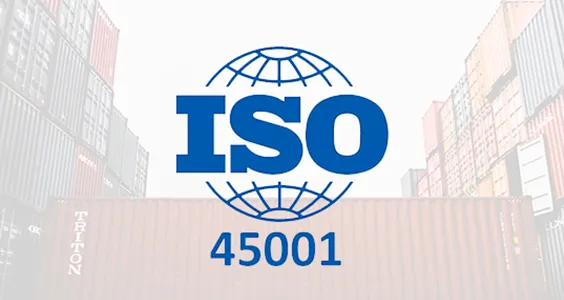ISO 45001 and 4HSE: Why Digitalize the Health and Safety Management System
The ISO 45001 international standard sets the requirements and provides guidelines for the implementation of a health and safety management system (HSMS).
More specifically, the UNI ISO 45001:2018 standard replaces the OHSAS 18001 standard, establishing that all organizations with a certified HSMS will have until 2021 to transition to the new international standard.
The ISO 45001 certification was developed to mitigate all the risk factors that can cause harm to companies and their employees, and it is applicable to any organization (regardless of size, type, and nature) that wants to implement a structured path for workplace safety management (WSM), improving its performance in terms of injury and illness prevention.
The main difference between this standard and the previous OHSAS 18001 is the emphasis on risk management, encouraging companies to adopt a risk-based approach to identify sources or situations that could harm the entire system.
Goals and Benefits
ISO 45001 represents a turning point in health and safety at work. For the first time, all companies have the opportunity to refer to a single, uniform standard internationally, which provides a clear path to develop suitable measures.
The two main results that the standard aims to achieve are:
- Continuous improvement of workplace safety performance
- Achieving the established objectives
We could see it essentially as the application of the PDCA Cycle (or Deming cycle) used for process and product management:
- Plan: planning objectives and processes necessary to achieve the expected results
- Do: execution and implementation of the plan
- Check: checking the results obtained and comparing them with the expected ones
- Act: did the implemented plan have the desired effects? Can it be improved? This is the phase where the process is either finalized or improved.
How can we practically translate this continuous improvement cycle?
- Establishing systematic processes that consider risks and opportunities related to different contexts
- Determining what these risks are and what actions need to be taken to eliminate or mitigate their effects
- Establishing operational controls
- Evaluating the performance of the adopted Health and Safety at Work model, looking to improve it with appropriate actions
- Ensuring that workers take an active role in matters related to WSM
This all translates into:
Improved response times
Reduced incidents and overall costs
Reduced downtime and disruption costs
Improved employee-company empathy
A Digitalized Approach to Health and Safety at Work
ISO 45001 provides guidelines, but does not establish a specific methodology for risk analysis, which remains at the discretion of the professional technician.
This is because, if we think about it, the real need for any company or organization is not so much to evaluate the effects of a specific risk or know the expiration of a protective device, but to have an overview of all aspects related to workplace safety… and therefore:
- Mapping of environments, equipment, and substances
- PPE: how many are available, type, delivery, and expiration
- Training: organizing courses and editions, workers to train, and those already trained
- Health Surveillance: visits and prescriptions
- Maintenance: maintenance status, plans, and orders
- Event log: focusing on injuries, incidents, and near misses
- Risk assessment
- Certificates and fitness
- Managing expiration dates
4HSE is a tool designed to provide all information related to health and safety in the workplace in a single place, through a digitized management that simplifies procedures and minimizes documentation.
A tool created to achieve that overview and collaboration among all parties involved in the HSMS, transforming needs into software functionality.
